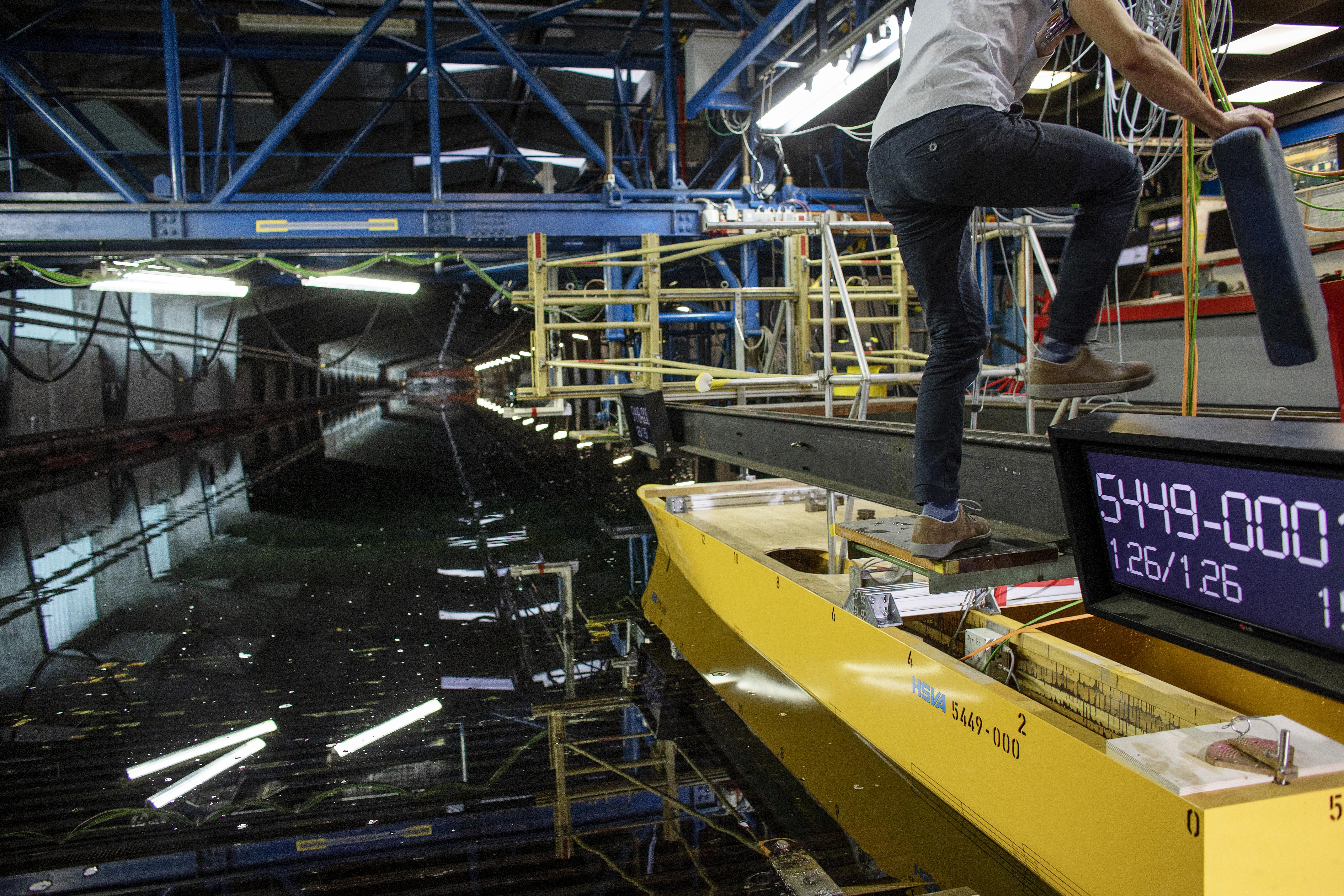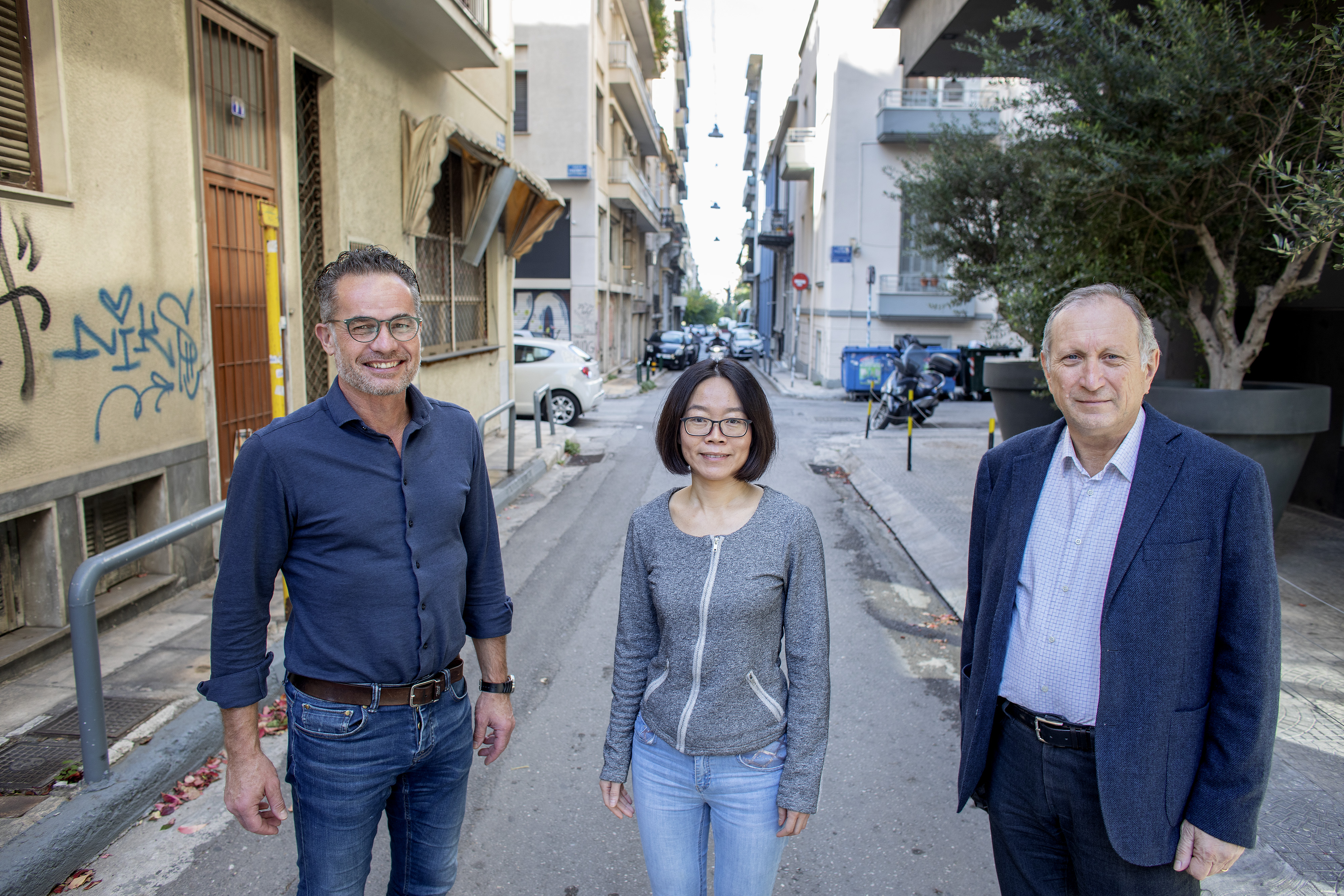Pictured: Torleif Stokke (Servogear), Yan Xing-Kaeding (HSVA) and Geroge N. Zaraphonitis (NTUA) and the other project partners met in Athens last week.
HSVA is one of the 13 partners in the EU-funded TrAM project. Preparing the design and the construction start of the world´s first zero-emission fast ferry, HSVA carried out extensive numerical and experimental studies of the hull and the propulsion system.
– An essential constraint for the success of the TrAM project is that the developed pure electric-powered vessel should be a high-speed zero-emission passenger vessel, and competitive in terms of offered services to conventional vessels. It´s crucial that the vessel has a very low environmental footprint and sustainable life-cycle cost, says Senior Researcher and Project Manager at HSVA, Dr.-Ing. Yan Xing-Kaeding.
Super-efficient design
HSVA is responsible for the hydrodynamic design of the Stavanger demonstrator vessel, Medstraum, in collaboration with NTUA and Servogear. Numerous numerical and experimental studies have been carried out to ensure the vessel’s efficiency, and that Medstraum meets environmental concerns and regulations.
– To achieve high speeds for any type of vessel, it´s vitally important to conduct a hydrodynamic optimization of the ship’s hull form, and its propulsion systems. Even more for fast-going catamarans. The very high achieved propulsive efficiency on Medstraum, of about 80%, is an essential characteristic for the feasibility of the vessel´s concept. This is because of the design constraint set by the weight of the batteries being the only source of the onboard energy, says Xing-Kaeding.

Extensive studies
Together with project partner National Technical University of Athens (NTUA), HSVA has analyzed 1.000 different hull forms utilizing a considerable amount of computer resources. Parameters such as ship’s dimension, hull form, resistance, radiated waves, required powering, and many more, were thoroughly investigated to ensure Medstraum became as efficient as possible. Project partner Servogear developed the Medstraum’s propulsion system and initial aft ship hull form with their in-house propeller tunnel design, and the joint optimization of its interaction with the vessel’s hull form showed a superior propulsive efficiency, more than 10 percent, compared to other best-performing propulsion systems.
After performing numerous simulations of the different hull variations and propulsive arrangements, the final hull form and the propulsive system were verified by calm water resistance and self-propulsion tests at HSVA’s large towing tank in Hamburg.
A 5.34-meter-long catamaran model (scale 1:5.6), fully equipped with propellers, shafts, brackets and rudders, was made to enable a firm prediction of the speed-power performance of the full-scale ship under trial conditions.
– It was verified that the propulsive efficiency of the optimized catamaran reached about 80% at the design speed, which is a remarkable result! Achieved results allowed the operator and the shipyard to proceed to the final selection of battery capacity and electric motors’ power for the desired speed profile of the Stavanger demonstrator, Xing-Kaeding, says.
– The tests done at HSVA were crucial for the TrAM project. The achieved vessel’s superior hydrodynamic results are the merit of several of the project partners, but the experimental verification provided by HSVA has helped us confirm Medstraum as a very energy-efficient vessel, says Project Manager Mikal Dahle of Kolumbus.
About the TrAM project
The TrAM consortium includes 13 European partners and is coordinated by Rogaland City Council (NO) through its independent mobility services company Kolumbus (NO) which will also own and operate the demonstration vessel. The demonstrator is designed and will be built by Fjellstrand shipyard (NO) with an energy system provided by Wärtsilä (NO) and a propulsion system by Servogear (NO). Vessel modules will be delivered by Leirvik (NO) with aluminum supplied by Hydro Extrusion Norway (NO). Fraunhofer (D) leads the work in adapting modularity models from the automotive and aviation industry to the needs of the maritime industry, in addition to smart city integration. University of Strathclyde (UK), National Technical University of Athens (GR), and HSVA (D) are consortium members responsible for R&D, simulation, and testing. Dissemination activities are provided by NCE Maritime CleanTech (NO) and owners of the replicator cases are Uber Boat by Thames Clippers (UK) and De Vlamsee Waterveg NV (B).
The TrAM H2020 project has received funding from the European Union’s Horizon 2020 research and innovation program under grant agreement No 769303.

